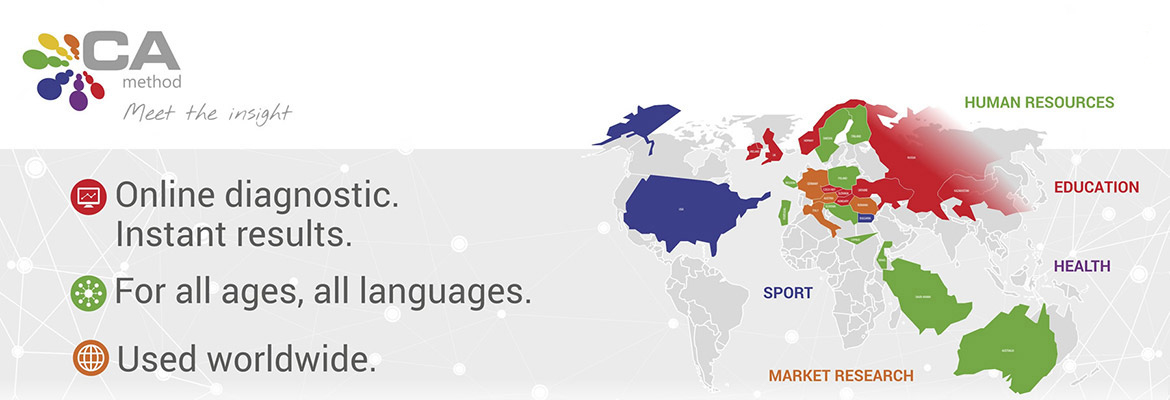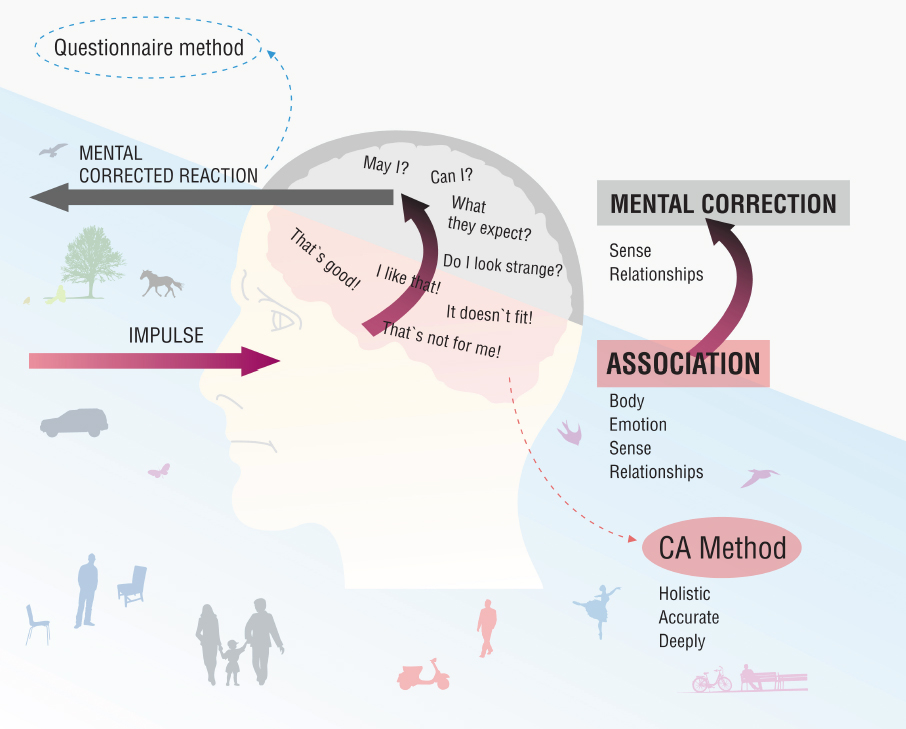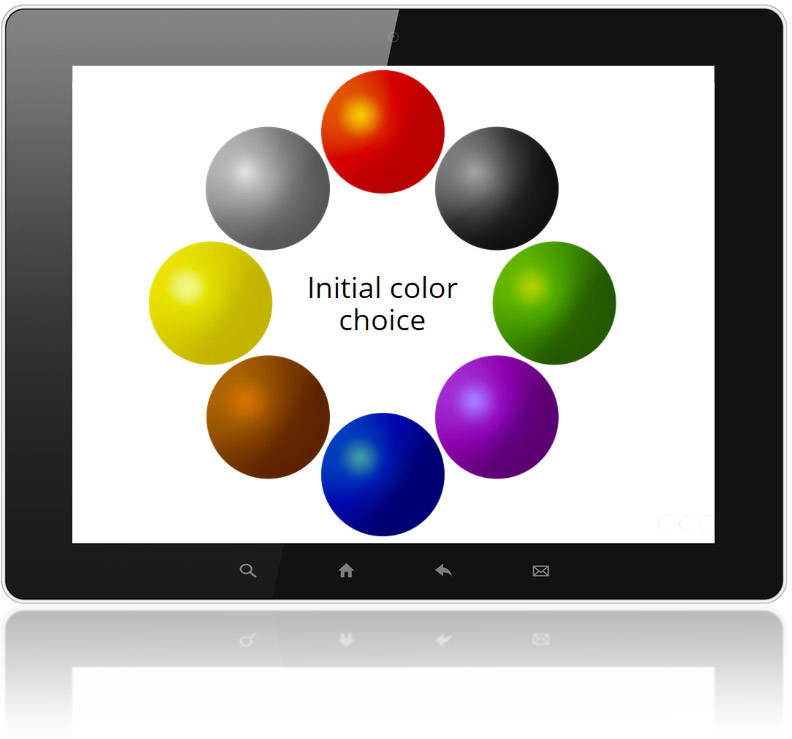
CA method is an objectivized tool able to clarify the structure and processes of individual and group thinking, experiencing, emotions and behavior leading to self-realization. It is a diagnostic-intervention system using color-word associations. It is a radically new attitude to diagnostics and intervention to those previously known in classical psychology or psychiatry. It functions on a neurobiological basis and combines psychology with scientific knowledge of neuroscience, medicine, biology, mathematics, sociology, statistics and information technology.
The technique uses a palette of eight colors and calibrated sets of words, which can be adjusted according to a particular question or problem. The method utilizes and measures the social psychological spectrum of attitudes including their realization potential (not only what people think and prefer, i.e. the hierarchy, but also whether these attitudes will actually be realized in their behavior, how effectively and in what time horizon). The word schema databases can be customized to address specific problems.
The great advantage of the method is the ability to add stimuli (such as pictures, words, songs, video clips and even scents) to trigger the most comprehensive and accurate responses. Neuronal pathways are stimulated within a millisecond by the connection of the color and the stimuli. These provoke associations to which the person is instructed to react via colors. CA method evaluates these responses and accurately describes how a person experiences and processes information.

The Color-Word Association Technique measures patterns of behavior using a color scale instead of traditional questionnaires or surveys, provoking a response that cannot be consciously influenced.
How Does the Method Work?
The client responds to the stimuli in the form of specific words and colors and his brain combines words and colors with specific associations (linking experience to the meaning of the word). It is then possible to read not only about the impressions an individual or a group gives but about what they experience and feel as well. The main features of the method are its simplicity (time-saving work on a computer) and projectivity (there is no right or wrong choice, just mine).
The form of the diagnosis is very satisfactory to respondents and provokes a minimal communication defense. The respondent is not limited by the quantity or quality of available information or the level of his/her rational thinking because he/she uses association mechanisms, which are almost uniform in all people. “Measured information” about so-called mental phenomena of an individual or a group is therefore thorough, integrated and respects both long and short-term evolutionary processes of brain development of the individual or, in the aggravated form, of groups. With a user interface that is simple enough for even children to use, the method is used worldwide since it is not affected by cultural factors, language, education or respondents’ previous experience with any type of testing or measuring.

Identifying or naming colors is not an objective of the technique. It is not essential that the person can name a certain color in the sphere as red, orange, fiery red or blood red, for example, but rather that the color frequency waves pass through the human eye to the brain.
Author of the Method
The author of the method is a Czech psychologist Jiří Šimonek, who got inspired particularly by the experience and ideas of a famous Swiss psychologist Max Lüscher, well known for Lüscher color test. Colors as a psychological diagnostic tool were adopted by professors from the fields of psychiatry, philosophy and psychology. Lüscher’s color diagnostics are taught in seven languages at universities worldwide, such as in Denmark, Finland, Norway, Austria, Italy, Germany, Switzerland, the USA (Yale, Boston), Chile, Peru, Argentina, Hungary, Romania, Czech Republic and Slovakia. The theory of associations was brought to psychology by Wilhelm Wundt and William James at the end of the 19th century, detailing the basic principles and laws of associations in the human brain.
Jiří Šimonek linked these two approaches and benefits of both methods together.
For learning more about the method and its history, please refer to the following links: History, Description, Patent, Validity and Reliability of the Method, Scientific Publications, Collaborating Capacities and Experts.
All information about the method can be found at camethod.com.

